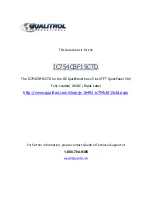
-
8
-
AZ-N SELF DIAGNOSTIC SOFTWARE
The identification of errors within the AZ1-N chassis is triggered in one of two ways :- 1: Busy or 2: Device failure to respond to IIC. In the
event of one of these situations arising the software will first try to release the bus if busy (Failure to do so will report with a continuous flash-
ing LED) and then communicate with each device in turn to establish if a device is faulty. If a device is found to be faulty the relevant device
number will be displayed through the LED (Series of flashes which must be counted).
LED Error Codes and Descriptions
Number of LED
Flashes
Error Description
Checked
Action
02
Power Supply Protection error.
In normal and factory mode.
Goes into standby.
03
Audio error.
In normal and factory mode.
Goes into standby.
04
Balancer error.
In normal and factory mode.
Goes into standby.
05
Panel Error & Panel ID error
In normal and factory mode.
Goes into standby.
06
Inverter error.
In normal and factory mode.
Goes into standby.
13
NVM error.
In initialisation state.
Adds error to error menu.
14
I2C error.
In normal and factory mode.
Adds error to error menu.
15
Tuner error.
In initialisation state.
Adds error to error menu.
16
DVB-T/C Demod error.
In initialisation state.
Adds error to error menu.
18
USB error.
In normal and factory mode.
Adds error to error menu.
19
CI error.
In normal and factory mode.
Adds error to error menu.
Resetting Error Codes (OSD Service Menu)
1. If Software version of the set is older than M8R31 (M8.311), update to latest version.
2. Power Off / Power ON.
3. Apply TT19.
4. Apply TT08. TV switches off and then restarts.
5. Confirm error had disappears.
Note: TT19 is necessary if Factory mode is not enabled.
When Factory Mode is enabled “F” is shown on top right of the screen in TT mode.
Ver 4.0









































